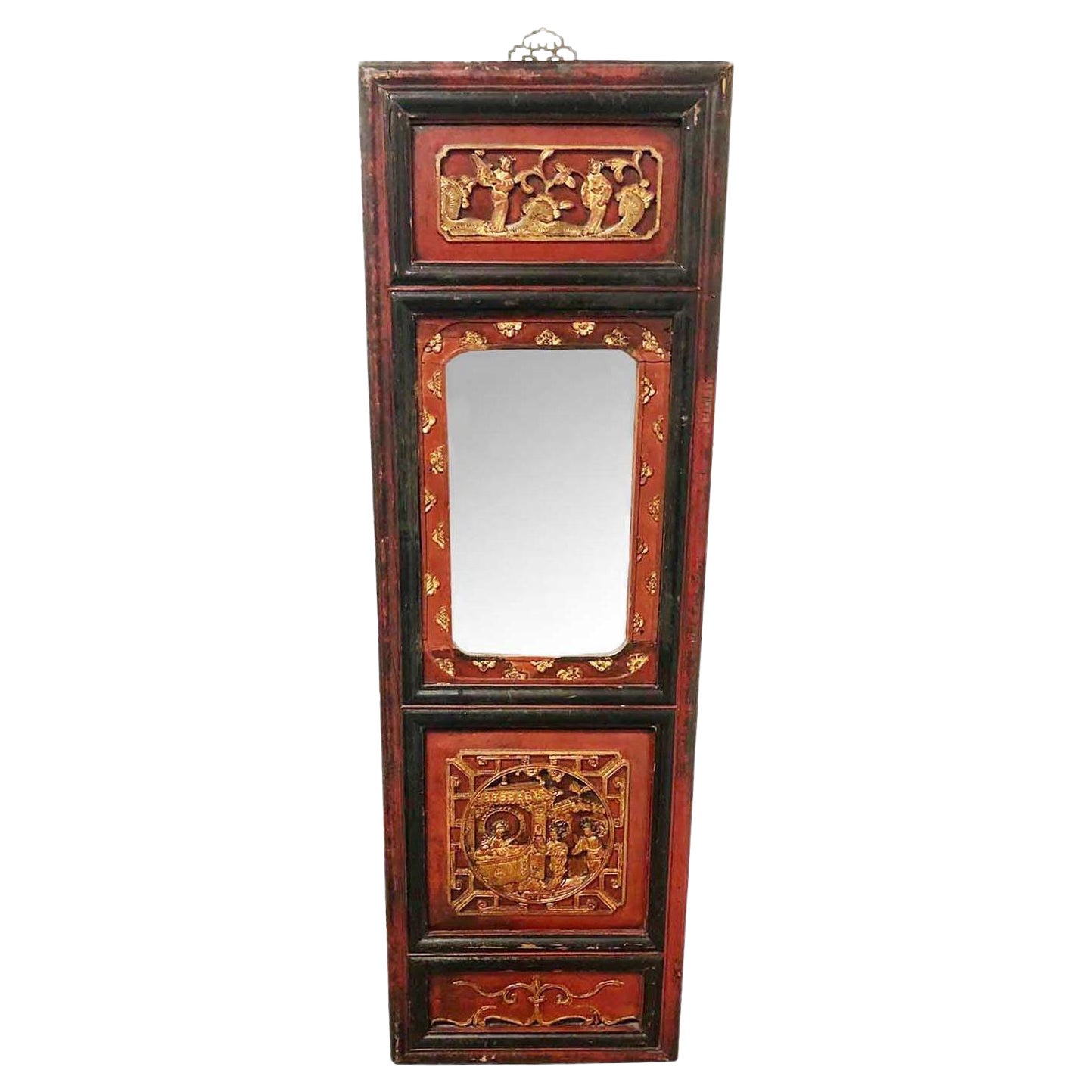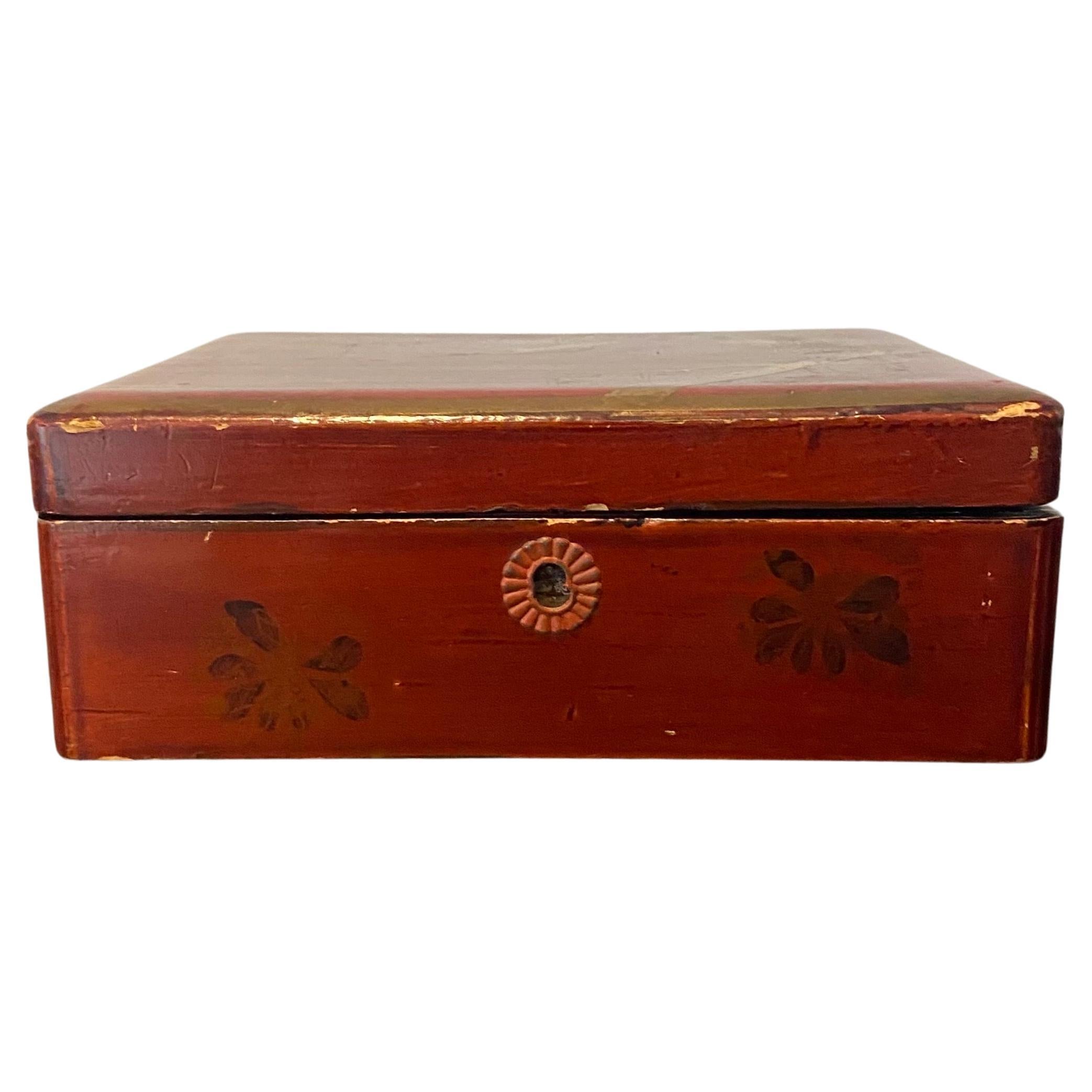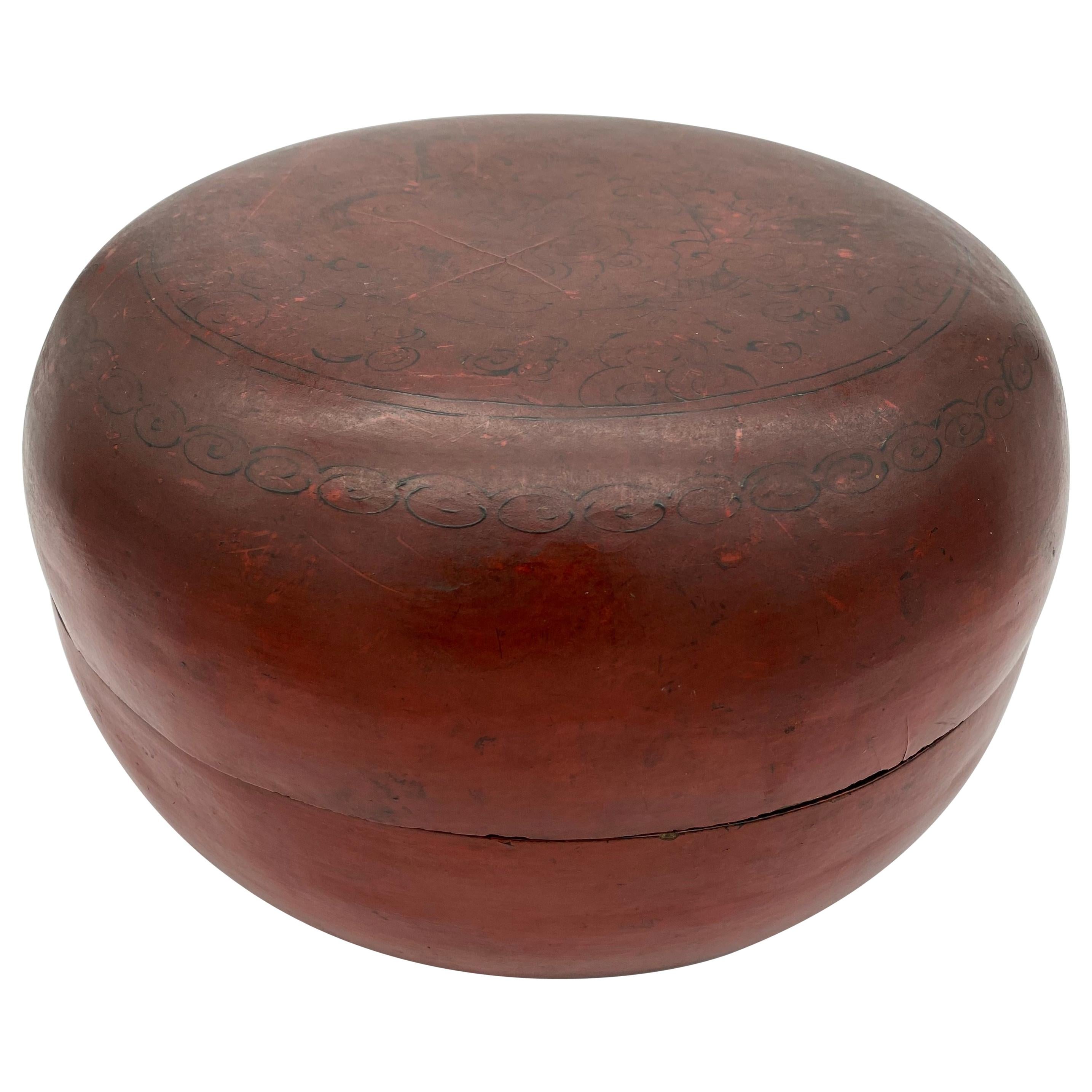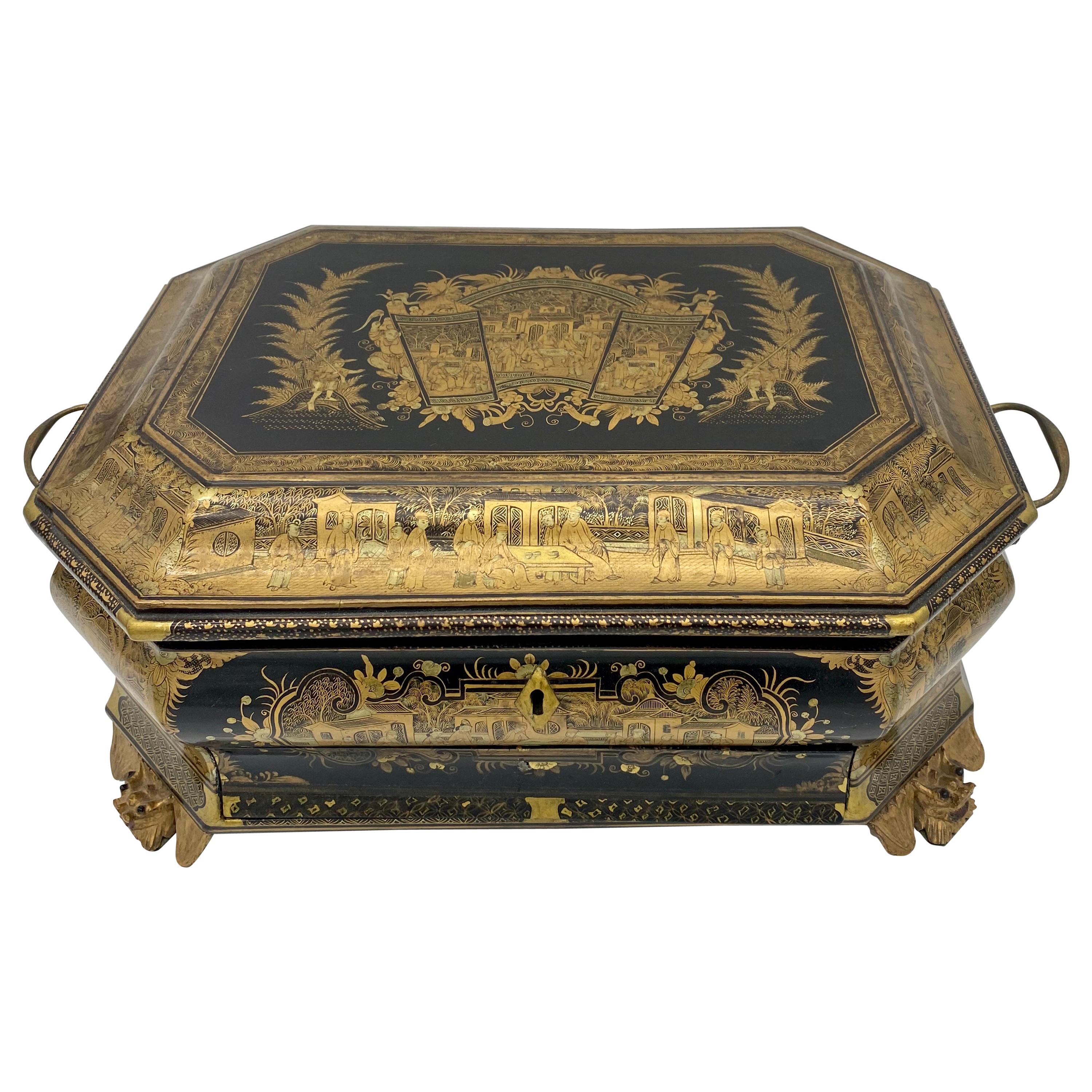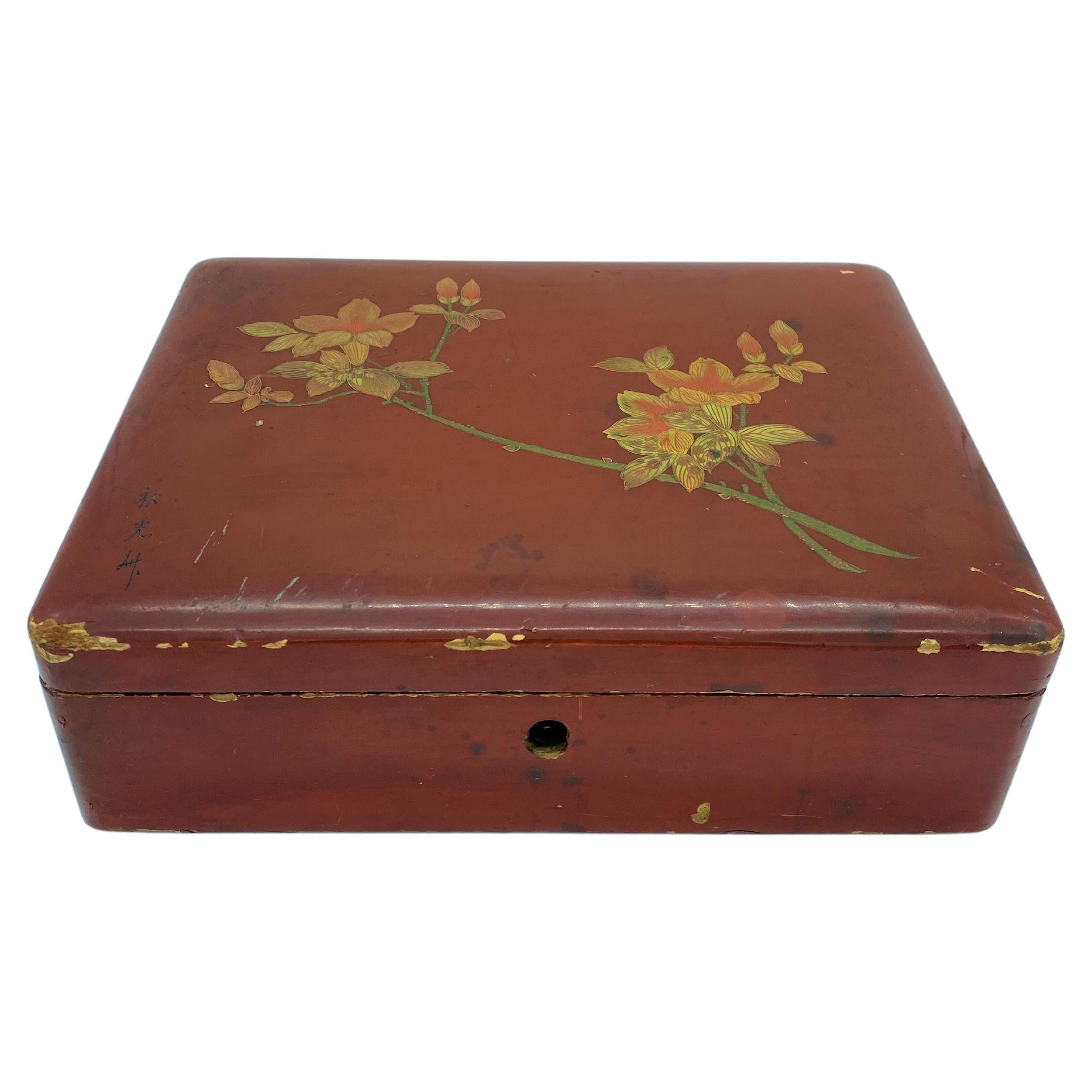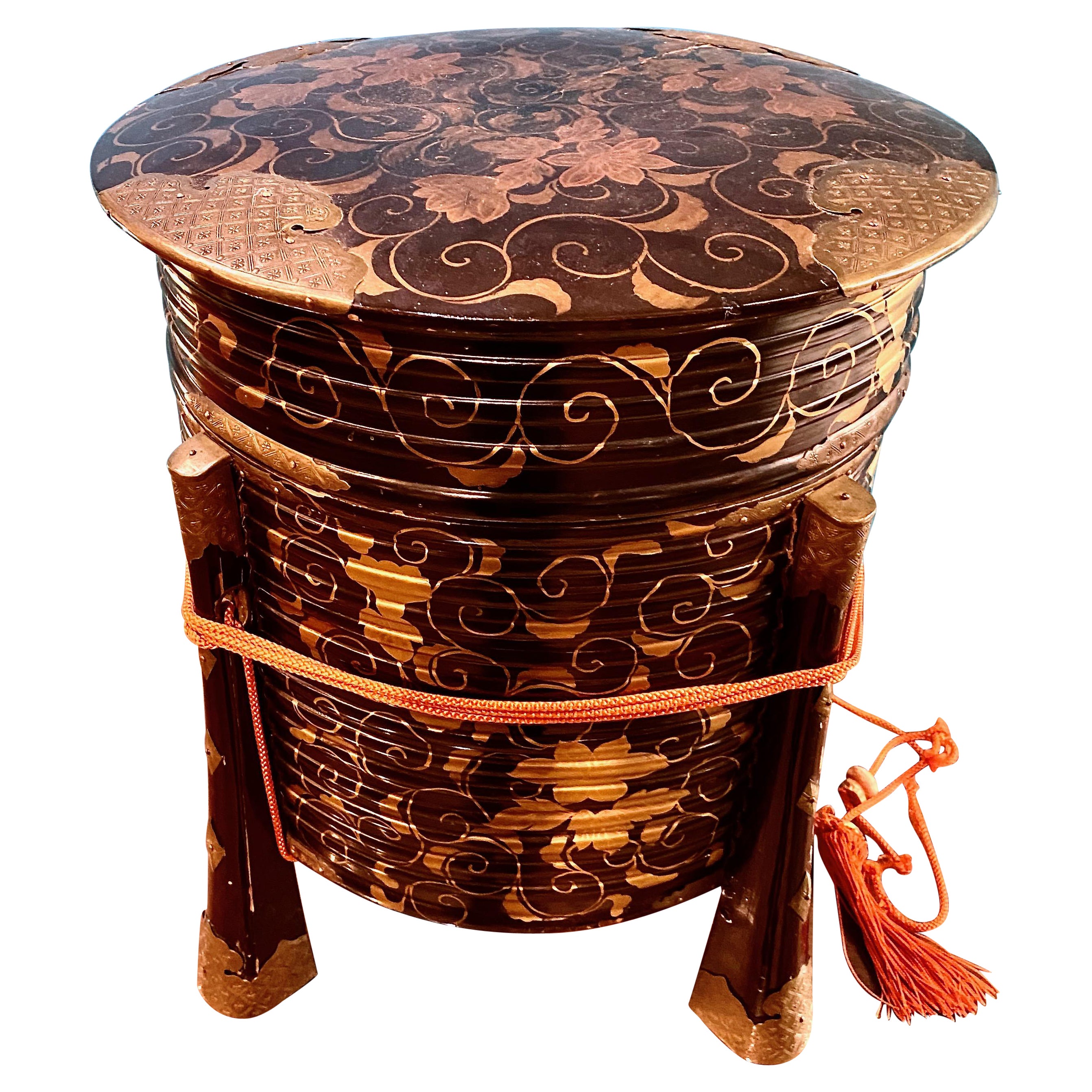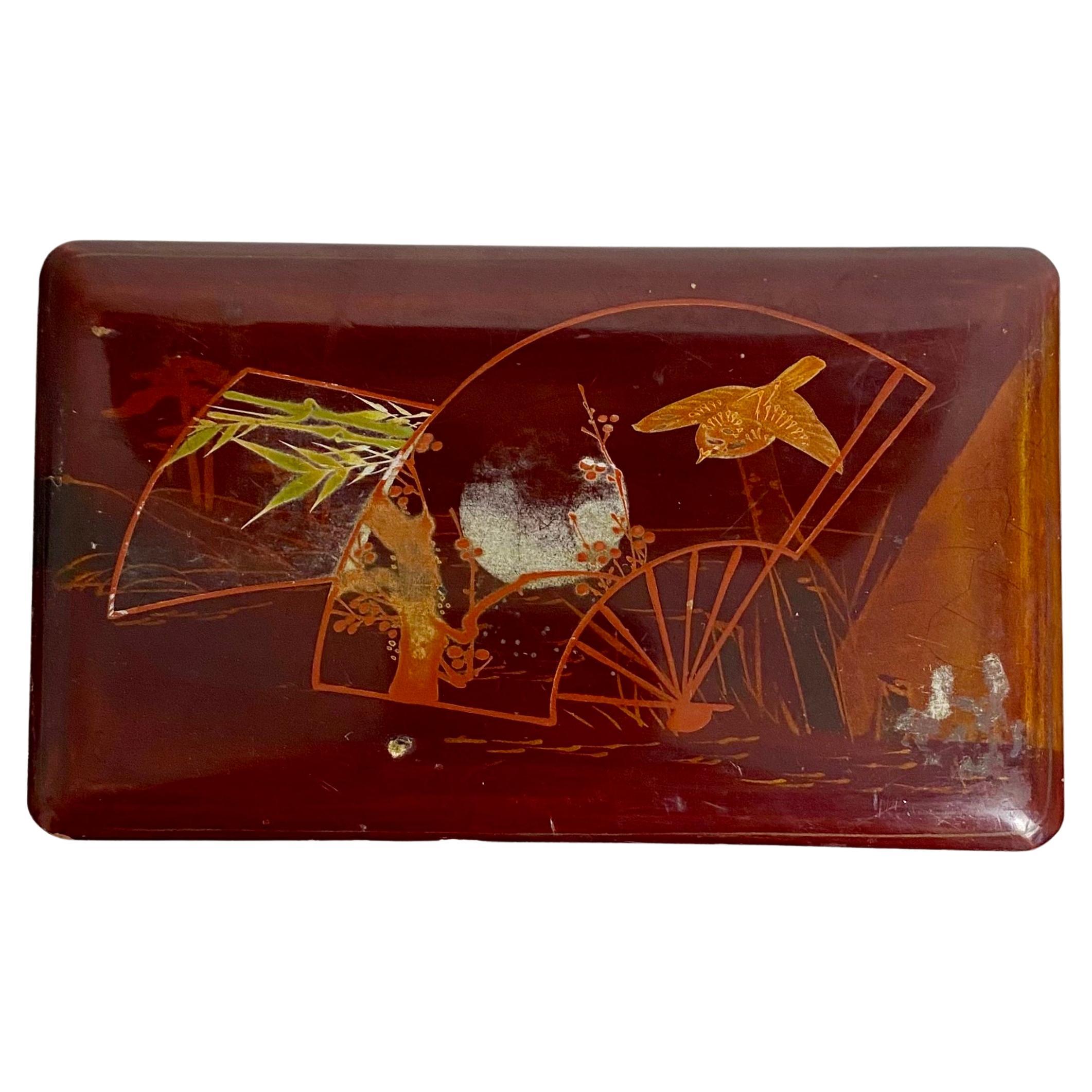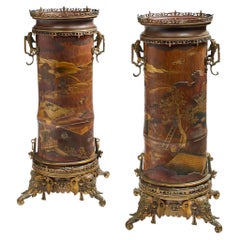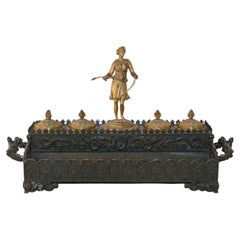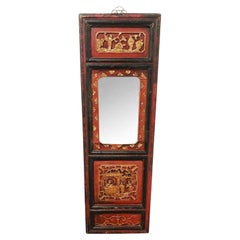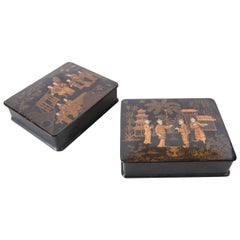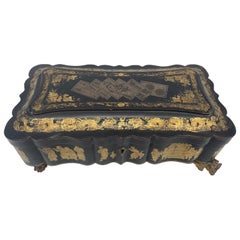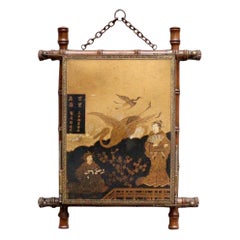
French 19th Century Japonisme Hanging Brot Mirror, circa 1890
View Similar Items
Want more images or videos?
Request additional images or videos from the seller
1 of 11
French 19th Century Japonisme Hanging Brot Mirror, circa 1890
About the Item
- Creator:Maison Brot (Maker)
- Dimensions:Height: 13.39 in (34 cm)Width: 10.63 in (27 cm)Depth: 1.58 in (4 cm)
- Style:Aesthetic Movement (Of the Period)
- Materials and Techniques:
- Place of Origin:
- Period:
- Date of Manufacture:circa 1890
- Condition:Wear consistent with age and use.
- Seller Location:Saint-Ouen, FR
- Reference Number:1stDibs: LU2612326961972
About the Seller
4.9
Vetted Seller
These experienced sellers undergo a comprehensive evaluation by our team of in-house experts.
1stDibs seller since 2017
56 sales on 1stDibs
Typical response time: 1 hour
More From This SellerView All
- French 19th Century Pair of Lacquered Bamboos Japonisme VasesBy Ferdinand Barbedienne, Edouard LievreLocated in Saint-Ouen, FRA 19th French century pair of Lacquered Bamboos Japonisme vases. An amazing pair of tall cylindrical bamboo vases decorated in Japanese Gold and Sil-ver Hiramaki-E Lacquer with Pavilions in The Mist and Weaving Figures, Flown Over by a Pair of Cranes. Enclosed in a Sino-Japanese Inspiration Golden and Brown Patina Bronze Mount Featuring Elephant Heads, Partially Openwork Branches and Salamanders Forming Side Handles. Circa 1870 Attributed to Édouard Lièvre (1828-1886) and Ferdinand Barbedienne (1810-1892) Édouard Lièvre (1828-1886) is one of the most talented and prolific designer and industrialist of the 19th Century, his repertoire is sometimes Sino-Japanese or Neo-Renaissance, whether in furniture or works of art, we can note in particular the parade bed of Valtesse de La Bigne, furniture commissioned by the painter Édouard Detaille or even Sarah Bernhardt, and the famous works in collaboration with Maison Christofle or those in gilded bronze and cloisonné enamel edited by Ferdinand Barbedienne, presented at the Universal Exhibitions in 1878, 1889 and 1900. He was both a draftsman, painter, illustrator, engraver, ornamentalist and cabinetmaker, first trained in the studio of the painter Thomas Couture, Lièvre was then fully immersed in the world of decoration, creation and ornamentation and provides designs for manufacturers and merchant-publishers. Often assisted by his brother Justin, he first produced works of art for his own apartment, seeking out the finest craftsmen to execute his designs for bronzes, ceramics, fabrics and luxury furniture from great virtuosity and great taste. He then collaborated with the cabinet-maker Paul Sormani, as well as haberdasher merchants such as the Escalier de Cristal, bronziers such as Maison Marnyhac and especially Ferdinand Barbedienne as on our vases with bronze mounts characteristics of Edouard Lièvre's work. Born in 1810, died in Paris in 1892, Ferdinand Barbedienne, the most important caster of bronze pieces of art during the second half of the 19th Century, created and directed in Par-is one of the major artistic foundries of his time. Barbedienne specialized in classical reproductions, whose models were exposed in famous European museums. Their illustrated catalogues included many diverse objects such as busts, ornemental sculpture (clocks, candelabras, cups) sometimes even life-sized and bronzes for furniture. Apart from his own produc-tion, Barbedienne worked for the most renowned sculptors such as Barrias, Clésinger and Carrier-Belleuse. All his works were highly esteemed and he, himself honored by contemporary critics. At the London exhibition in 1851 Barbedienne’s firm won two « Council medals ». At the 1855 Universal Exhibition, he won a medal of honor. The success of Barbedienne’s firm brought him many official commissions, such in about 1860, as Barbedienne supplied bronzes for furniture for the Pompeian Villa of Prince Napoléon-Joseph, located avenue Montaigne in Paris. At the London Universal Exhibition of 1862 Barbedienne won medals in three different categories: Furniture, Silversmith work and Artistic bronzes. Barbedienne was made an officer of the Légion d’Honneur in 1867 and Commander in 1878 when he was compared with « a prince of industry and the king of bronze casting ». His glory did not decline with the passage of the time for at the Universal Exhibition of 1889 the critics thanked Barbedienne for the example he set for other bronze-casters by the perfection of his bronzes. “Japonisme” in the second half of the 19th century, was a craze for everything that came from Japan or imitated its style. The word was first coined in a series of articles published by Philippe Burty, from May 1872 to February 1873, in the French magazine “la Renaissance Littéraire et Artistique”. Far from the Academic sphere, artists seeking for new ways of expression, appropriated this discovery. Manet and the impressionists led the way to half a century of enthusiasm for Japanese art, and largely contributed to the esthetical revolution Europe experienced between 1860 and the beginning of the twentieth century. From 1862, The World’s Fairs provoked massive arrivals of fans, kimonos, lacquers, bronzes, silks, prints and books that launched the real era of Japonisme. With those exhibitions, the demand was boosted, the number of merchants and collectors was multiplied, and artists became passionate about this new esthetic. For them, its “primitivism” was probably its most important quality: artists were fond of the Japanese art’s capacity to be close to nature and to reconcile art and society by representing, with a lot of care, the most trivial objects. In painting, Edouard Manet, Mary Cassatt, Degas, Van Gogh, Gauguin were among those who were deeply inspired by Japanese art, affected by the lack of perspective and shadow, the flat areas of strong color, the compositional freedom in placing the subject off-center, with mostly low diagonal axes to the background. The Japanese iris, peonies, bamboos, kimonos, calligraphy, fish, butterflies and other insects, the blackbirds, cranes and wading birds, the cats, tigers, and dragons were endless sources of inspiration, appropriation, and reinterpretation for European artists. The occidental productions were combining styles and artistic conceptions instead of copying Japanese art slavishly. That is what brings to light the comparison between the artworks of Kitagawa Utamaro and Degas, of Katsushika Hokusai and Van Gogh The World’s Fairs of 1851 and 1862 in London, those of 1867, 1878, 1889 and 1900 in Paris, of 1873 in Vienna and of 1904 in Saint Louis presented a number of “Japanese-Chinese” installations with earthenware, bronzes, screens and paintings and attracted the largest amounts of visitors In Vienna, the “Japanese village...Category
Antique 1870s French Japonisme Vases
MaterialsBronze
$42,250 Sale Price / set35% Off - French 19th Century Restauration Psyche Coiffeuse MirrorLocated in Saint-Ouen, FRA French 19th Century Restauration Psyche Coiffeuse mirror Patinated and gilt bronze rectangular Psyche Coiffeuse Mirror designed with Greek frieze, palmettes, oves, strings of p...Category
Antique 1820s French Restauration Table Mirrors
MaterialsBronze
- French 19th Century Neogothic InkwellLocated in Saint-Ouen, FRDiana the Huntress A Louis Philippe Neo-Gothic Style Ormolu Inkwell Rectangular in brown patina bronze and gilt bronze. The tier presents in its center a statuette of Diana the ...Category
Antique 1850s French Napoleon III Inkwells
MaterialsBronze, Ormolu
- A French 19th Century Louis XVI Style Side Table, circa 1880Located in Saint-Ouen, FRA very good quality 19th century French charming two-tier side table with a single frieze drawer parquetry inlaid, designed with Allegories of Geography and Astronomy, with pierced t...Category
Antique 1880s French Louis XVI Side Tables
MaterialsOrmolu
$3,927 Sale Price25% Off - 19th Century French Lacquered Wood ChandelierLocated in Saint-Ouen, FRA 19th century French polychromed lacquered wood eight-light chandelier Lacquered gloss cream wood with green, red and brown highlights Contained vase ending in foliated seed welcoming eight arms forming semicircles. The top has a frieze of red flowers in green interlacing and is topped with leaves and a painted egg cream...Category
Antique 1890s French Louis XVI Chandeliers and Pendants
MaterialsWood
$5,727 Sale Price30% Off - French 19th Century Twelve Lights Restauration Period ChandelierLocated in Saint-Ouen, FRA twelve lights green patinated metal, bronze and ormolu restauration period chandelier.Category
Antique 1820s French Restauration Chandeliers and Pendants
MaterialsBronze
$6,311 Sale Price35% Off
You May Also Like
- 19th Century Chinese Fragment as a MirrorLocated in Tampa, FLAn early 19th century red lacquer with gold accents Chinese fragment with gold courting scenes converted into a mirror. Brass holder for hanging.Category
Antique Early 19th Century Chinese Wall Mirrors
MaterialsWood, Lacquer
- 19th Century Chinoiserie BoxesLocated in Newport Beach, CAPair of intricately hand-painted, lacquered, parcel-gilt, occasional boxes.Category
Antique 19th Century English Lacquer
MaterialsLacquer, Wood
$3,900 / set - 19th Century Chinese Lacquer BoxLocated in Brea, CA19th century Chinese lacquer box from the Qing dynasty. Used as box for nails made of lacquered wood. Oriental scenes in golden. In ve...Category
Antique 19th Century Chinese Qing Lacquer
MaterialsLacquer
- 19th Century Chinese Lacquer BoxLocated in Brea, CA19th century Chinese lacquer box from the Qing Dynasty. Used for board games and golden by hand. In very good condition.Category
Antique 19th Century Chinese Qing Lacquer
MaterialsLacquer
- 19th Century Lacquer Flower BasketLocated in New York, NYAn unusual, intact willow and lacquer flower basket with original cast iron hanger. From Shanxi Province, c. 1850. BT369Category
Antique 19th Century Chinese Lacquer
MaterialsWillow, Lacquer
$700 Sale Price41% Off - Japan Red Lacquered Box 19th centuryLocated in Beuzevillette, FRBeautiful Japanese box in red lacquered wood. The lid is decorated with golden herons and flowering tree branches and signed by the artist. Black flowers are painted around the box. ...Category
Antique Late 19th Century Decorative Boxes
MaterialsWood
Recently Viewed
View AllMore Ways To Browse
French Circa Mirror
Three Mirror
Two Antique Mirrors
Antique Panelled Mirror
Antique Panel Mirror
Antique Paneled Mirror
Movement Mirror
French 19th Century Painted Mirror
Maison Mirror
French Paneled Mirror
L Mirror
French Panel Mirror
Painted Mirror Panels
Antique Mirrors 3
Antique Hanging Frames
Two Panel Mirror
Bronze French Table Mirror
French Mirror Hand Painted
